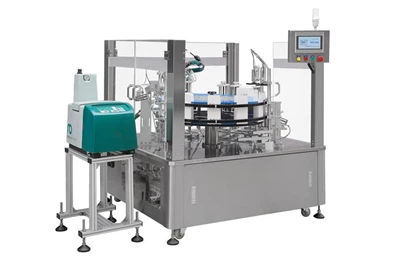In the world of bottled water production, from water source to finished product, every step pursues efficiency and precision. The addition of collaborative robots, like an all-round assistant, quietly changes the production process and becomes a key force to improve efficiency and ensure quality.

1. Grasping and handling: efficient and precise "hands"
In bottled water production, handling is a basic and critical link. The robotic arm of the collaborative robot is flexible and can steadily grab a row or even multiple rows of bottled water with an intelligent grasping device. Whether it is a small 500ml bottle or a large-capacity family bottle, it can accurately locate and grasp it safely, and quickly complete the handling from the conveyor line to the temporary storage area and packaging table. No longer relying on manual repeated handling, it not only reduces manpower consumption, but also avoids the possibility of knocking over and falling due to manual operation, so that every bottle of water can be "safely" circulated.
2. Sorting and classification: "Fiery eyes and golden pupils" distinguish the difference
Bottled water on the market has different capacities and different packaging, and needs to be classified and processed during production. With visual recognition technology, collaborative robots are like "fiery eyes and golden pupils" and can quickly identify the labels and bottle shape differences on the bottle. When seeing the ordinary 500ml package, it is accurately sorted to the regular packaging line; when encountering customized gift boxes, it is immediately transferred to the special packaging channel. No matter how the production order changes, it can respond flexibly, so that multi-specification production is no longer chaotic, helping enterprises to efficiently meet diverse market needs.
3. Human-machine collaboration: safety and flexibility
In the bottled water workshop, it is common for people and machines to work together. Collaborative robots have their own safety sensors, just like "perception", and they will stop in time when they encounter people to avoid injury. For example, in the light inspection link, workers spot-check bottles that may have problems, and the robots are next to them to carry other products in an orderly manner without interfering with each other. This collaborative mode not only gives full play to the efficiency of robots, but also retains the flexibility of manual inspection, making production safer and more efficient.
4. Data support: production is more "smart"
When the collaborative robot is working, it will also silently record data, including the number of grabs, handling time, and whether there are any small mistakes. These data are like a "health report" for production. Enterprises can find problems from them, such as whether the robot handling is slow, whether the fixture should be changed; which bottle type is the most time-consuming to produce, and how to optimize it. Relying on these data, bottled water production is no longer "based on experience", but is upgraded in a smarter and more efficient direction.

In bottled water production, collaborative robots have become "smart partners" in production step by step, from handling and sorting to cooperating with people, and then using data to help. It makes production more efficient and more accurate, and also drives the bottled water industry to move forward on the road of intelligence. In the future, it will continue to inject new vitality and possibilities into this traditional industry.







